The post It Takes a Village appeared first on Mission Aviation Fellowship.
]]>
Bryan Eygabroad landed his Cessna 206 at the Lebakeng airstrip high in the mountains of Lesotho. He was unloading cargo when he overheard a group of nurses from the local clinic chattering excitedly in a mix of Sesotho and a Zimbabwean language. The nurse relayed to Bryan that a tragedy had struck the village the night before. A local woman had died shortly after giving birth.
The baby survived … but there was no milk or formula in Lebakeng. It had already been hours and the baby needed food—fast.
“Looking at my flight schedule for the afternoon,” said Bryan, an MAF pilot, “I realized I was going to finish the day a mere 10 minute-flight away from my current stop. Surely there was something that could be done!”
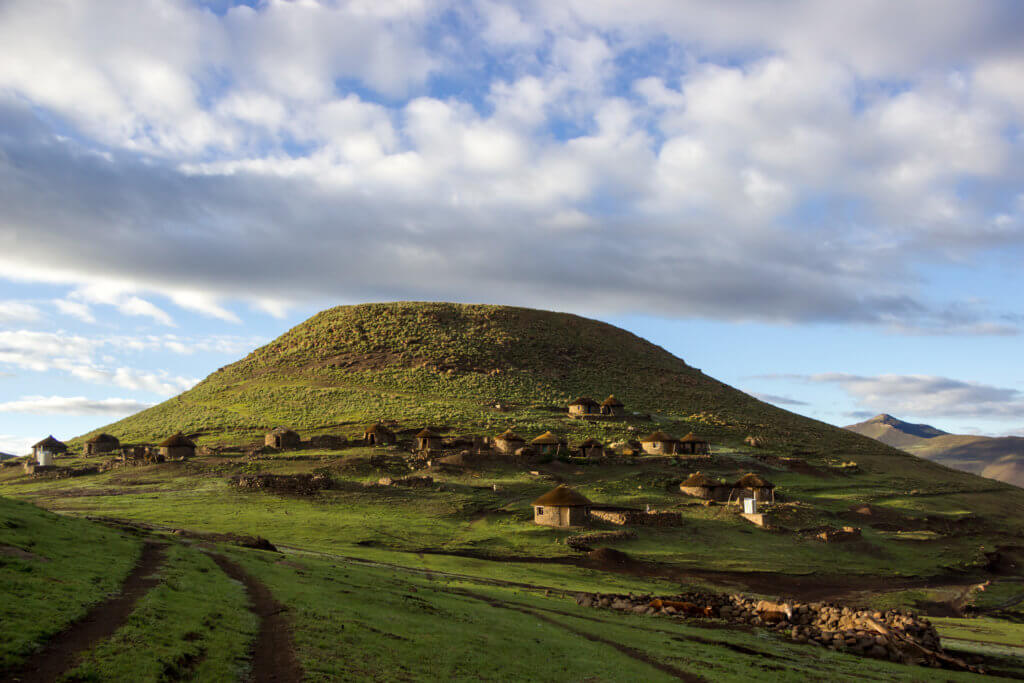
Two clocks were ticking: one counted down how long this new infant could last without nourishment, and the other measured the time until the high winds would begin sweeping over the mostly treeless mountains of Lesotho in the afternoon.
If Bryan could not make it back to Lebakeng before the winds picked up, his chances of landing were slim.
High in the Mountain Kingdom
Like many villages in the tiny mountain kingdom of Lesotho, Lebakeng is remote.
Without an airplane, a trek out would involve a steep hike down a ridge, somehow crossing the wide Senqu River, and then hiking up the opposite mountain—which would only get one to the beginning of a gravel road—with many hours still to go to reach the nearest town.
Making this trip in the case of a medical emergency—or with a newborn baby—would simply be impossible. An MAF airplane is the only way.
Although this land and its people are beautiful, the needs here are great. Lesotho has an alarmingly high HIV rate, and there is little infrastructure in the remote parts of the country. Because of your support, MAF is able to partner with organizations like the Lesotho Flying Doctor Service and the Lesotho Flying Pastors, among others, to bring healing and hope to the people of this small nation.
Teamwork
The MAF team in Lesotho is made up of western missionaries like Bryan, along with several local Basotho (what people from Lesotho are called) who have a desire to share Christ’s love with their own people. Some of the vital roles they play include maintenance specialists, loaders, bookkeepers, and flight followers; and there is even a Basotho MAF chaplain.
“It has been really amazing to see how this team of Basotho staff have really grown,” said Bryan. “They are developing in their roles and they make our jobs as pilots easy.”
The team often finds creative ways to work out the logistics of flight plans so that Bryan and the other pilots can respond to medical emergencies—rerouting schedules mid-flight, calculating fuel supplies, and directing them to where they can safely land and refuel from MAF’s remote fuel caches.
“By the time they call me,” said Bryan, “they have worked out all the details. I love working with them—it makes flying so much more efficient.”
This day was no different.
With this baby’s life on the line, local MAF staff members—including Lehlohonolo “Oliphant” Tjokolo, the flight operations manager, and Tebello Ntebe Ntelo, the MAF flight follower—worked quickly to make it possible for Bryan to bring help.
Just in Time
From Lebakeng, Bryan radioed Tebello at the MAF base in the capital city of Maseru, and she quickly got in touch with the nearby office of the Lesotho Flying Doctor Service. They sent a staff person to the store to buy a box of baby formula. The box was waiting for Bryan in the hangar as soon as he arrived.
Oliphant had made arrangements for the plane to be loaded and refueled, and, in no time, Bryan whisked away to Lebakeng and the hungry baby.
“If it weren’t for the team on the ground, I would have had to run to the grocery store and back to the hangar, which would have tacked on a lot of time,” said Bryan. “By that point it would have likely been too late to land back in the village with the winds picking up.”
Even so, the wind was already beginning to sweep over the mountains as Bryan neared the airstrip.
“I prayed earnestly, as the turbulence rocked my aircraft, that I would be able to land,” wrote Bryan in his family’s monthly prayer letter. “I fought that wind all the way to touchdown, but it was well within limits … just another ‘normal’ day in Lesotho!”
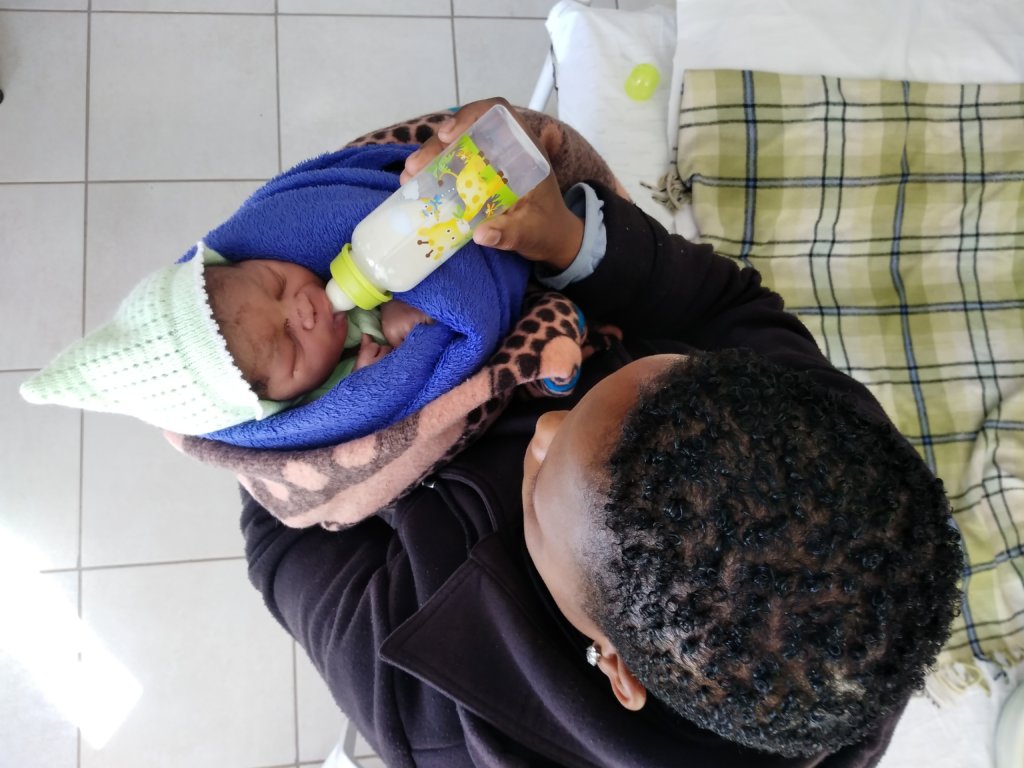
The formula was safely delivered. By the time Bryan was airborne on the way back to Maseru, he knew the nurses and villagers had worked out a long-term plan to care for the newborn baby.
“I love that I got to be a part of this story,” said Bryan. “But it was really the national staff who were instrumental in this story’s success. I was ‘ops-normal.’ They took the extra step to make sure everything worked out.”
“I have seen God’s love through MAF,” said Oliphant. “I feel blessed to be part of MAF Lesotho, where our everyday jobs include saving the lives of the Basotho people in the mountains. I enjoy saving lives.”
MAF would not be able to serve well in Lesotho without people like Oliphant and Tebello—nor could MAF share Christ’s love with isolated people around the world without the generous support of people like you who make stories like this possible!
The post It Takes a Village appeared first on Mission Aviation Fellowship.
]]>The post Beyond ‘Ends of the Earth’ appeared first on Mission Aviation Fellowship.
]]>
By Chris Burgess
One day in the summer of 2020, I walked out of my home office/laundry room, plopped onto our couch, and put my head in my hands. The email I had opened seemed like the final blow to a sputtering documentary film project. Four years of work, down the drain.
As I sat there, wallowing on the couch, a phrase I heard from a seasoned director early in this project rattled around in my head: “In a Hollywood movie, the director is god. In a documentary, God is the director.”
If that was the case, it seemed God and I were having some creative differences.
The Power of Story
Jesus would often respond to His disciples’ questions with parables. I don’t believe Jesus did this to frustrate them—although I get the sense that heads were occasionally scratched. Jesus understood the power of story. Stories capture and shape our imaginations. Parables about sowers and seeds, farmers and treasure, and Samaritans and robbers leave lasting impressions.
In 2016, several of us at MAF dreamed of telling MAF’s story to a larger audience—people who might not have heard about the incredible work God is doing through this ministry. Alongside partners Change Media and Collide Media, we explored the idea of creating a documentary film that would be released in theaters across the country with the goal of challenging audiences to rethink global missions and wrestle with what Jesus is calling each of us to.
Back then, none of us knew where this adventure would lead.
Finding the Plot
Over the years that followed, we picked stories, talked to potential partners, created storyboards, did initial interviews and eventually went back to the drawing board.
We felt that focusing on details in a few stories would allow audiences to get to know the characters and join them on their emotional journeys. But it was challenging to narrow down the number of stories due to MAF’s work, which holds a treasure trove of God’s amazing work.
After much discussion and prayer (and a few fits and starts) we settled on a direction.
Making a Movie in a Pandemic
By late February 2020, we were ready to begin production. I boarded a plane and took off for Indonesia. I remember walking through the Tokyo airport to catch the next leg-cramping flight. Crowds of people flowed past me wearing masks to protect them from a strange virus coming out of East Asia. I didn’t think much of it at the time.
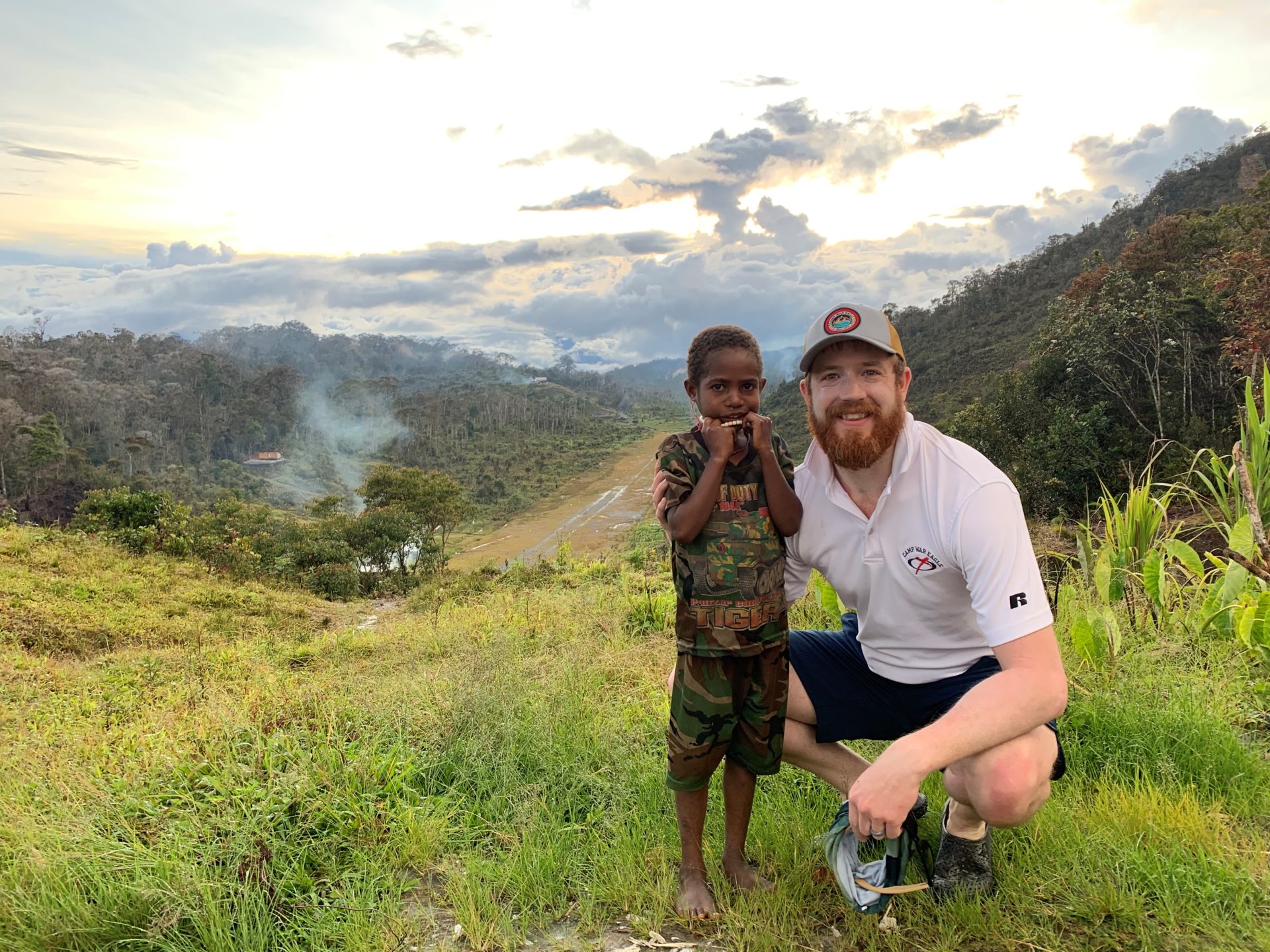
I made it to Papua, met Mark Hewes, a long-time video producer with MAF, and we headed to the villages of Mokndoma and Puluk and for the next week we were cut off from the outside world. We filmed the Wano believers, missionaries, and MAF pilots going into Puluk to inspect the airstrip there. This was to be a preliminary shoot that would set us up to come back in a few months with a full documentary crew.
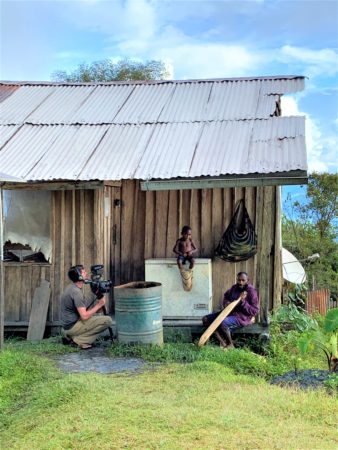
We got out of the villages in early March and discovered COVID-19 was quickly becoming serious. We made it back to the U.S. days before the world shut down.
It soon became clear we were not getting back to Papua anytime soon.
Before we left, Mark filmed a quick interview with Joyce Lin to acquire footage of her first flight for a different video project for MAF. Weeks turned into months and then early one morning, we heard tragic news—Joyce had passed away.
It looked less and less likely that the MAF documentary was going to ever see the light of day. Even if we finished it, the future of theaters looked very uncertain.
But it seemed God was taking His place in the director’s chair.
A New Story Emerges
The disruption of COVID-19, the story of Joyce’s sacrifice, and the faithfulness of the Wano believers made their way into the story—shaping this documentary into something bigger and more compelling than we could have imagined at the start.
Over the next few months MAF leadership’s commitment to this project never wavered. And partners like Moody Bible Institute, Radical, Christian Community Credit Union, The JESUS Film Project, and Our Daily Bread, still wanted to make it happen.
Collide Media and Change Media felt the time might be strategic for a theatrical release. The Lin family graciously allowed us to share Joyce’s story. The work in Puluk moved forward. And even though we were not able to get over there to film, MAF pilot Joel Geaslen and our missionary partners were able to shoot the first landing in Puluk.
There was no need for a pity party on my couch that day—God had always been in control.
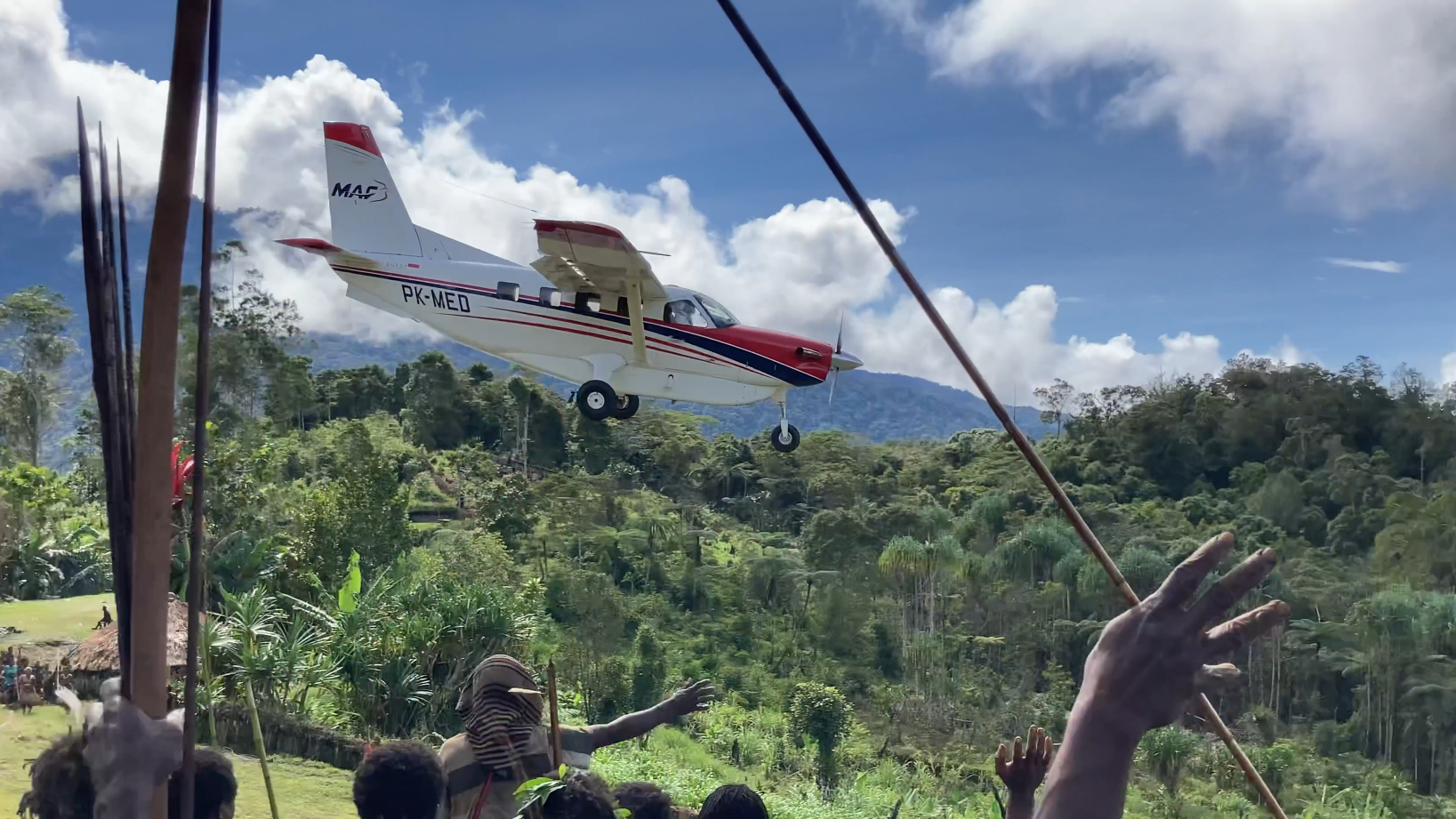
You Will Be My Witnesses …
This October, I sat in a theater surrounded by friends and family and watched Ends of the Earth. At the same time, people around the country sat in similar theaters and engaged with the stories of how the gospel is being shared in the farthest reaches of the world. Audiences wrestled with what God is calling each of them to as a part of His Great Commission.
As the story takes on new life and continues to reach new people, connecting them with MAF and the work God is doing around the world, I am thankful to have gotten a small glimpse of what happens when we let go and God writes the story.
###
Story appeared in FlightWatch Vol. 1, 2022. Read the full issue here:
The post Beyond ‘Ends of the Earth’ appeared first on Mission Aviation Fellowship.
]]>The post Last-Mile Delivery appeared first on Mission Aviation Fellowship.
]]>Mission Aviation Fellowship (MAF) has a history of vaccine delivery beginning in the 1950s in Central Africa. Recent vaccine flights include transporting Ebola vaccines in the Democratic Republic of the Congo (January 2021), and measles vaccines in South Sudan (November 2020)—which included super-freezing systems maintained with dry ice.
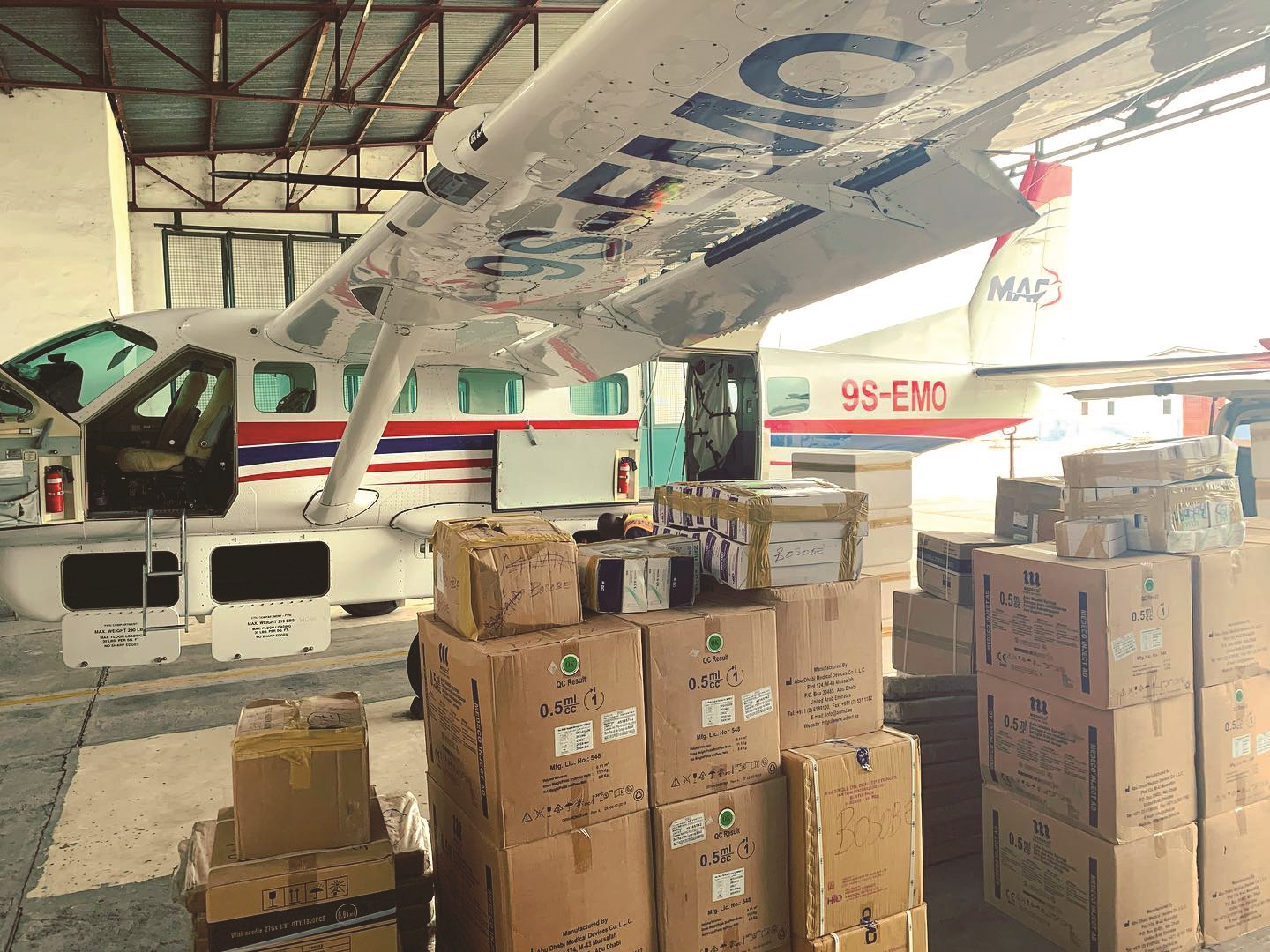
New mRNA treatments require super-chilling (-94֯F), which MAF can maintain across long distances with the use of dry ice and super-chilling freezers installed inside the aircraft. In countries which lack dry ice production or super-chilling facilities, MAF assists in critical last-mile delivery by air to avoid dangerous and lengthy overland travel, and ensure vaccines safely arrive in rural locations.
On March 23, 2021, MAF pilot Grant Strugnell delivered the first doses of a COVID-19 vaccine to a mountainside clinic near Kuebunyane—a journey too difficult for the vaccines to achieve without spoiling.
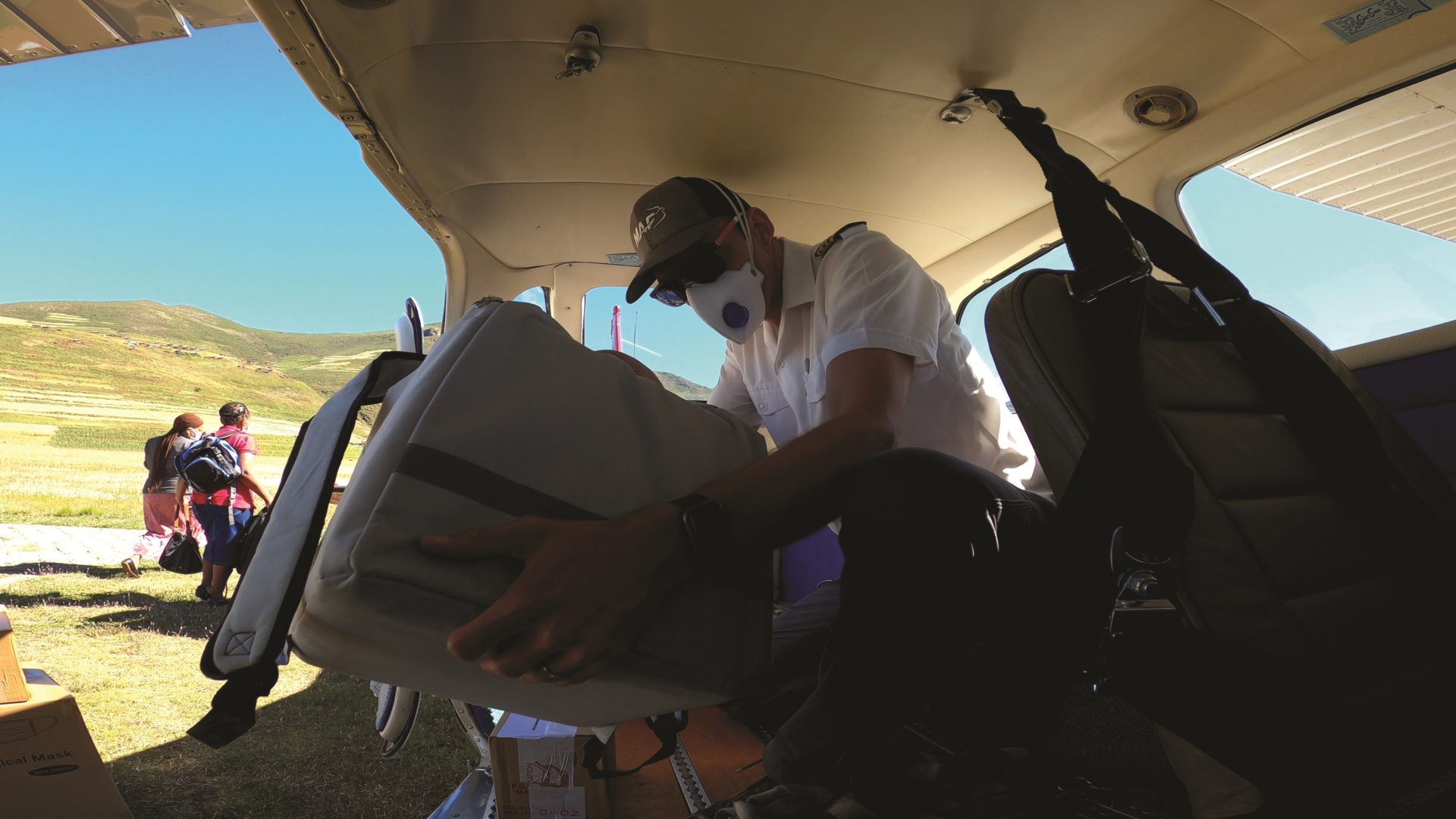
“Kuebunyane is one of the locations we fly to most because reaching this location by road is just too difficult,” said Strugnell. “The clinic is located on a steep mountain ridge, four hour’s trek from the nearest road. On average MAF lands there twice a week, offering the only air service to connect this remote region to vital medical supplies and personnel.
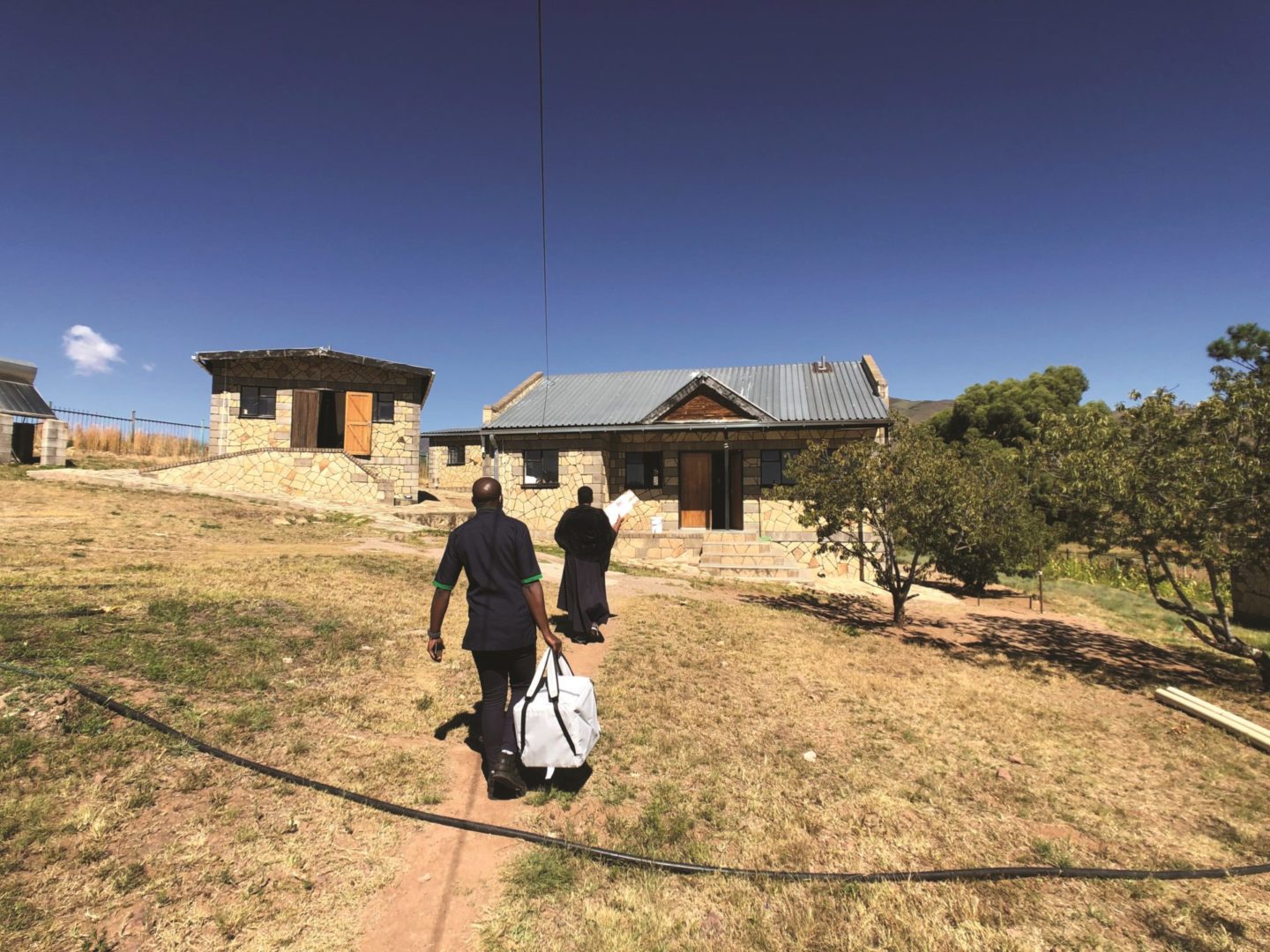
“MAF is really grateful to be partnering with the government and Lesotho Flying Doctors Service to deliver vaccines to the harder-to-reach clinics across Lesotho. I’m pleased that MAF aircraft are so well suited to this critical last mile of vaccine transport. By offering a journey of half an hour rather than eight, these vaccines can arrive at the required temperature.”
With a history of rural vaccine delivery spanning more than six decades, MAF flights will make it possible for some of the poorest and most remote communities to receive COVID-19 vaccines maintained at the correct temperature from the beginning to the end of their journey.
This story ran in the summer 2021 edition of FlightWatch. Read the full issue here:
The post Last-Mile Delivery appeared first on Mission Aviation Fellowship.
]]>The post Count the Elephants appeared first on Mission Aviation Fellowship.
]]>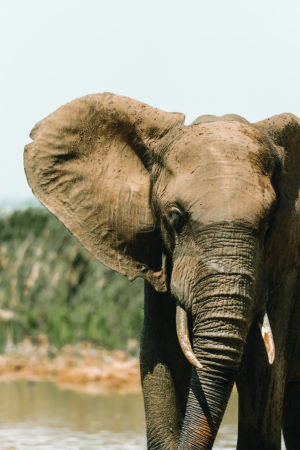
MAF pilot Jon Cadd has flown 300 feet over jungles in Zimbabwe, Mozambique, and the Democratic Republic of the Congo (DRC) more times than he can count. His passengers—park officials, game wardens, and conservationists—keenly spot and count elephants, buffalo, hippos, rhinos and even mongooses and pythons.
These are some of Jon’s favorite flights because they’re not just a chance to see wildlife. Flights like these provide unique opportunities for MAF pilots.
“We probably have the most ‘Kingdom conversations’ with people that sit with us in the airplane that are going into the jungles of the Congo,” said Jonathan de Jongh, an MAF pilot in the DRC. “Many of us pilots have experienced impactful conversations in the cockpit with different organizations that initially seem to have nothing to do with MAF’s ministry.”
A large part of MAF’s early vision was to “fly the missionary.” And while that remains a key focus, many MAF pilots understand their roles encompass more than that.
“I’m not just a taxi driver,” said MAF pilot Jon Cadd. “I am here to be a witness—to be an incarnational presence. To do that, I need to be around non-Christians.”
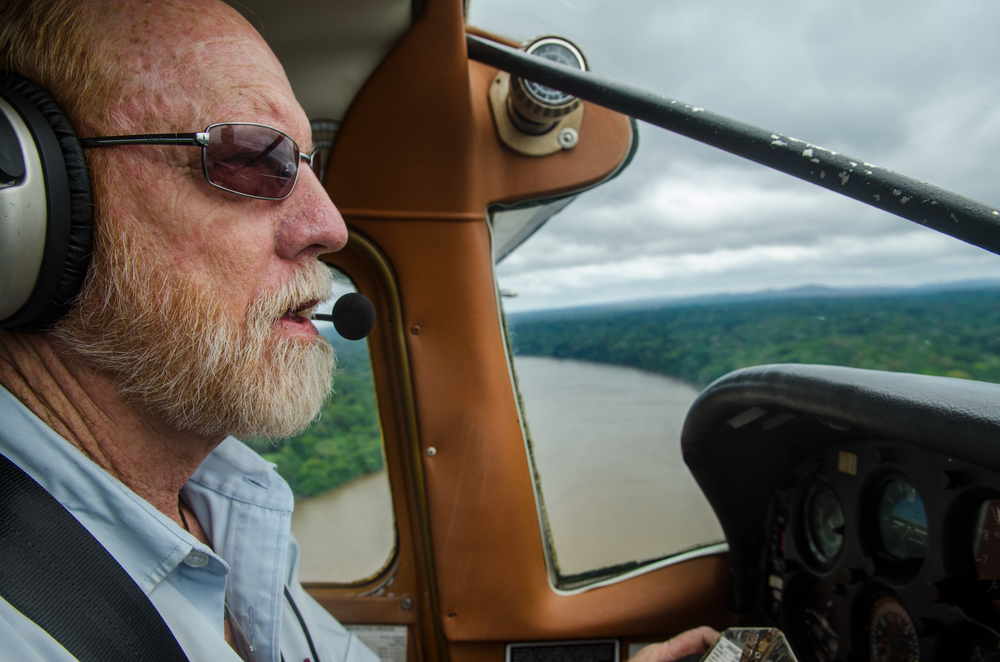
Opportunities to share the gospel are not the only reason MAF partners with conservation efforts. Stewarding creation is an important aspect of MAF’s ministry and a biblical mandate for followers of Christ.
“God gave us the responsibility to take care of the earth. I want to take on that responsibility,” said Jon.
And sometimes MAF pilots get a glimpse of the impact they have through these flights. A few years after Jon sat around a campfire with two park officials in Zimbabwe, he had the chance to reconnect with them. They had accepted Christ as their savior.
“You don’t always know the impact you’re having,” said Jon. “Everyone has their piece in the equation.”
This story appeared in the spring 2021 edition of FlightWatch. Read the entire issue here:
The post Count the Elephants appeared first on Mission Aviation Fellowship.
]]>The post Peace Grows in the Congo appeared first on Mission Aviation Fellowship.
]]>
By Chris Burgess
The Democratic Republic of the Congo (DRC) is one of the largest countries in the Africa by both land area and population. This vast country, which is almost as large as the eastern half of the United States, is home to an estimated 242 language groups. With mountains topping 16,000 feet, vast rainforests, and gigantic rivers, this country is beautifully complex.
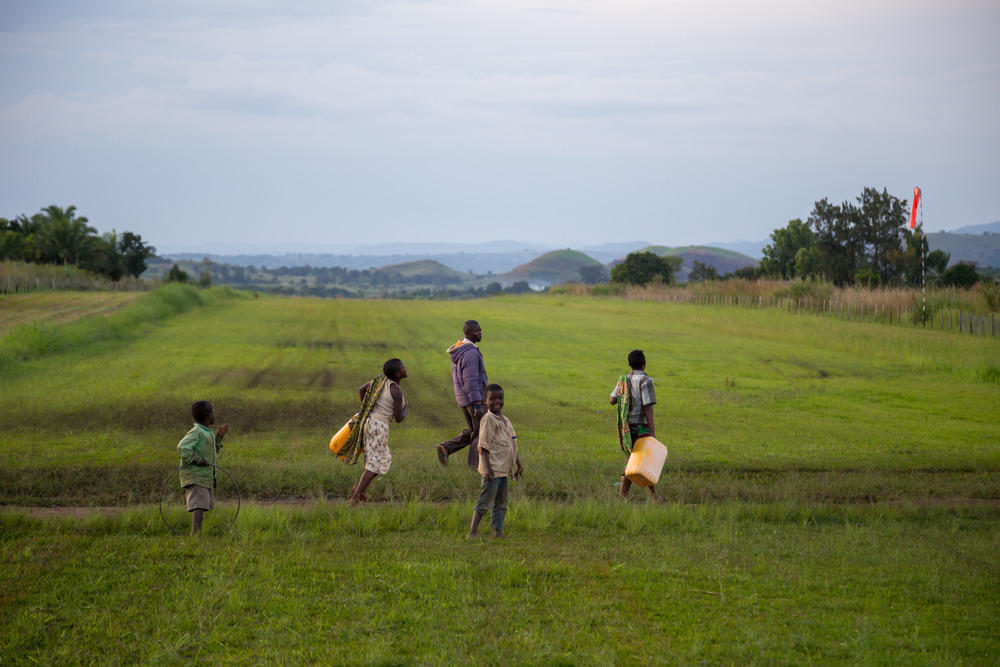
It has also seen its share of tragedy. COVID-19 is just one of the latest hardships afflicting this nation. Recent years have seen tribal warfare, recurring Ebola outbreaks, and a staggering number of internally displaced people.
Yet hope stubbornly persists amid hardship as the gospel continues to spread.
For decades, MAF has worked with Western missionaries in the DRC, yet in recent years, MAF pilots increasingly find their cabins filled with Congolese pastors and missionaries who are taking the message, hope, and love of Jesus to people in remote parts of this huge nation.
War and instability in the northern parts of the country make passage on the few roads crisscrossing the Ituri rainforest dangerous, but MAF flights can help local pastors bypass these challenges.
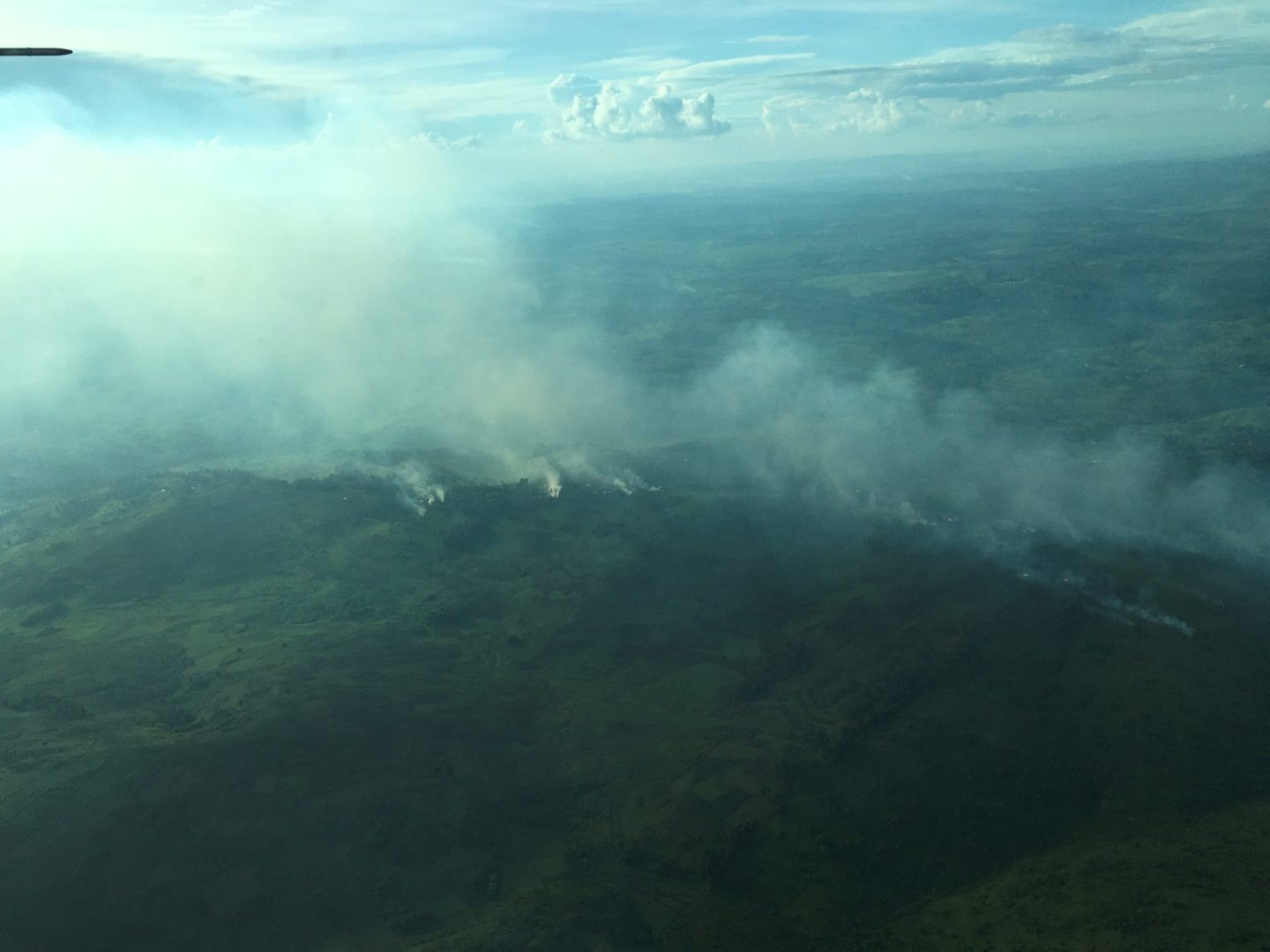
Recently a Congolese pastor moved from Bunia to Banda. MAF staff managed to fit all the pastor’s belongings into a Cessna Caravan—huge bags of clothing, cooking equipment, mattresses, jugs of oil, a bike—all items that may not have been able to make the difficult trip by land.
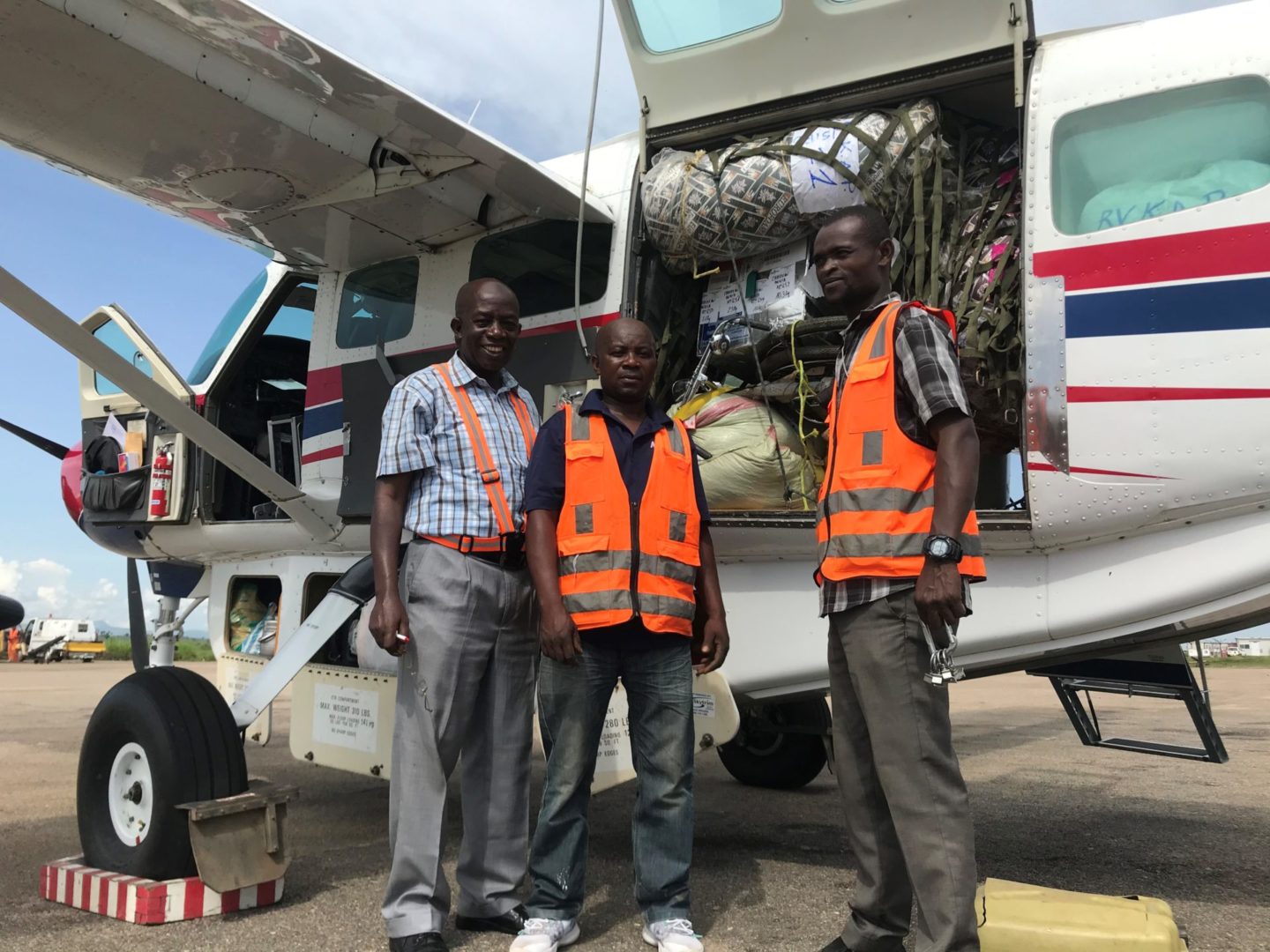
“One day I found myself taking a team of pastoral leaders to a small riverside village called Dingila, which is about 320 miles away and over 90% of the flight is spent over the jungle. I’d estimate at least a week of travel time was saved. Their mission is to strengthen the local church leaders through extensive Bible training as well as evangelism and strategic church planning seminars,” said Chad Dimon, an MAF pilot in the DRC.
When I step into the airplane and get to take pastors to interior villages so they can strengthen the church and bring others into the kingdom, I cannot describe the sense of fulfillment and impact it brings me.” – Chad Dimon
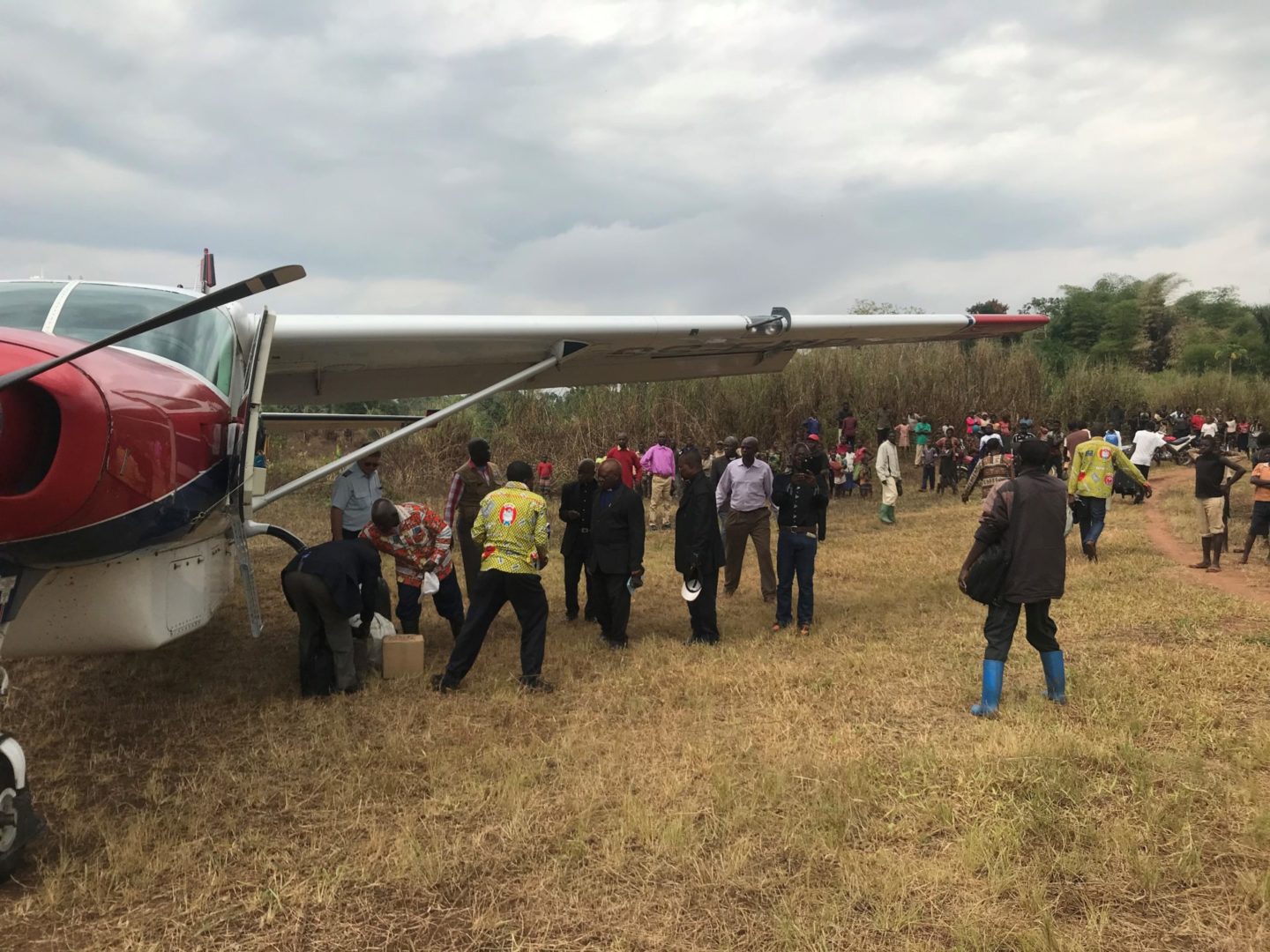
Cory and Annaleis Woodsum serve with MAF at the Nyankunde base in the eastern DRC. Their local church in Nyankunde hosted a youth retreat last summer. During the retreat, a young man asked if it was possible to follow Christ if he had already made a contract with dark forces for a talisman to protect him.
“He soon found that yes, Jesus breaks every chain, as he decided to follow Christ,” wrote Annaleis in a prayer letter.
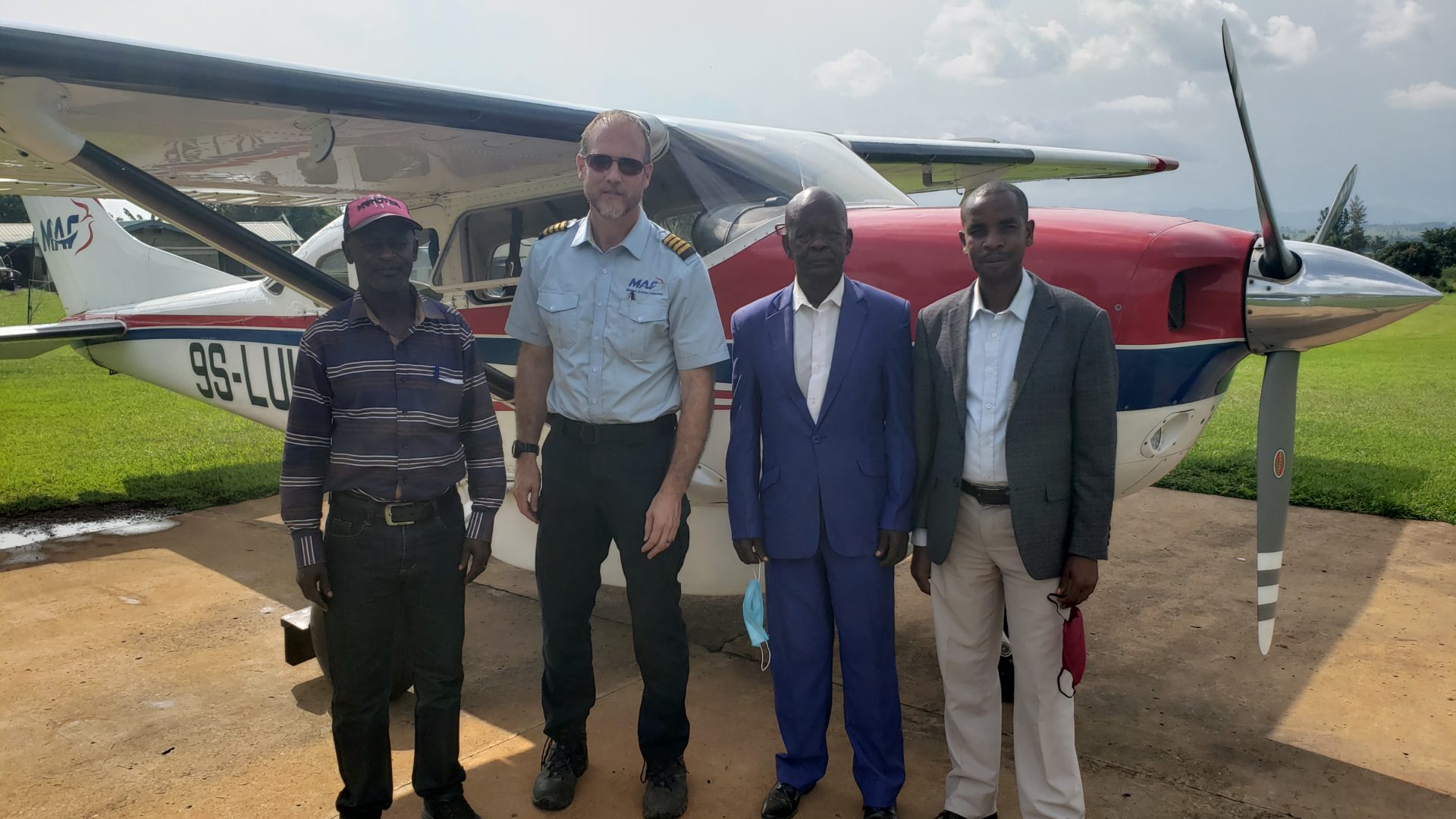
Later that summer, Cory flew a few chiefs and delegates to a round table peace conference, attended by nearly 30 representatives of the chiefdoms within the Irumu territory. At the summit, they identified many practical solutions to foster peace among the different tribes in this area. They focused on intercommunity conflict resolution, the disarmament of several militias, illegal mining solutions, aiding displaced peoples and helping to return them home.
“God has been at work in our province in bringing about unity,” Annaleis wrote.
MAF is able to serve Congolese pastors and the needs of isolated people in this vast country because of the support of people like you. You make it possible for Christ’s love to be shared in places like this around the world.
Story appeared in the Winter 2021 edition of FlightWatch. Read the full issue here:
The post Peace Grows in the Congo appeared first on Mission Aviation Fellowship.
]]>The post The Ugly Duckling appeared first on Mission Aviation Fellowship.
]]>There is a saying around MAF: “Planes change, but the mission stays the same.” And truly, MAF’s mission of taking the gospel to the ends of the earth has not wavered since 1945. However, the airplanes used to complete this task have changed drastically throughout the years. A look back through the flightlogs reveals one airplane stands out: the Grumman Duck.
The “Duck” was designed in 1933 and was a military airplane used around the world throughout WWII. The Duck was a single-bay bi-wing amphibious plane. In simple terms, this odd-looking aircraft had one main float under the center of the plane and smaller floats under the lower wings. It was so strange-looking, it was coined by some as the “Ugly Duckling.”
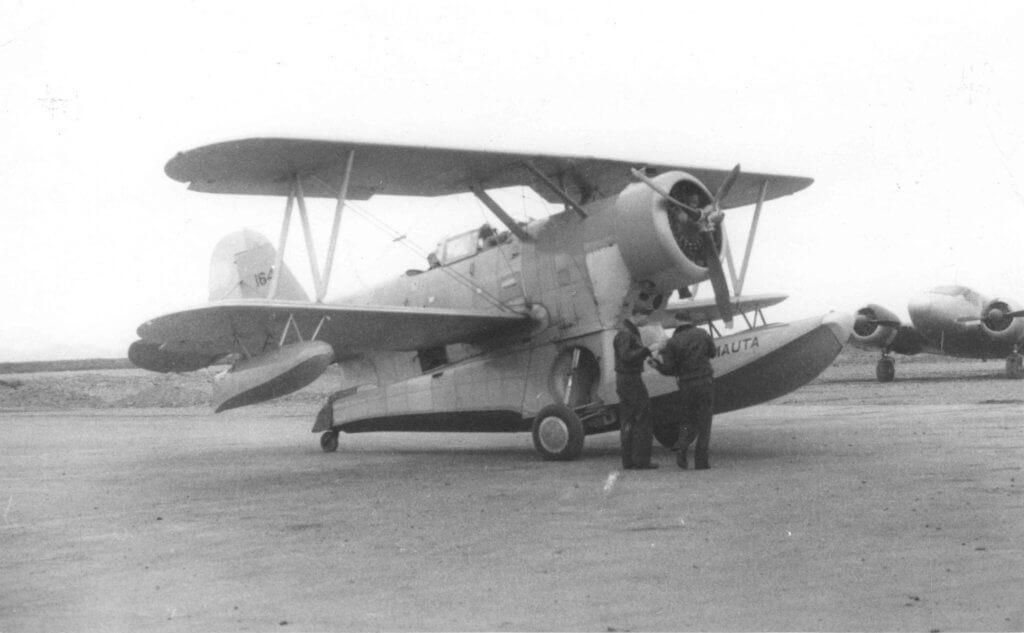
In 1946, Wycliffe Bible Translators acquired a Grumman Duck and needed MAF’s first pilot, Betty Greene, to fly it to support their work in Peru. Betty shares about her experience flying the Duck over the Andes in the book Flying High:
“I was eager to begin my assignment and went out to see the Duck the next morning. That afternoon I met Marine Corps General Ross Powell, chief of the navy air mission of the United States in Peru. The Duck had been under his command. General Powell, a marine to the very core of his being, was opposed to a woman pilot flying the plane. He thought it absurd to think of my flying the ship at all, to say nothing of me crossing the Andes with it and navigating on treacherous tributaries of the Amazon River in the Peruvian rain forest.
Having served as a WASP I knew how to take initiative. The Lord blessed me with the ability to stay cool under pressure. After rehearsing all the procedures, I turned on the engine and warmed it up. The sound of the roar rejuvenated my sagging spirits. I took off alone and soon found that the awkward-looking Duck was easy to fly. By the time I came down for the landing I knew I would enjoy flying the plane.”
Betty is recognized as the first woman to fly over the Andes—a feat she accomplished in this unique airplane.

This story originally appeared in the January 2020 issue of FlightWatch. Read the entire issue here:
The post The Ugly Duckling appeared first on Mission Aviation Fellowship.
]]>